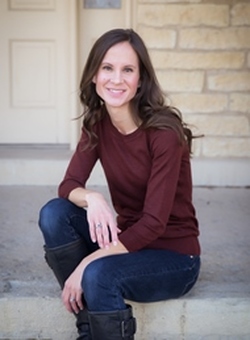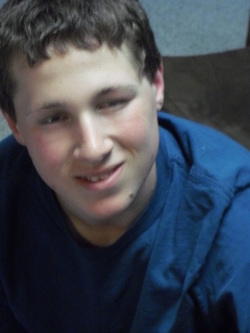
Pip and Grace, along with their mother (Clare), had recently moved into what they thought was a rather standard London flat after their father, a prize-winning documentary film maker, torched their old house in a paranoid schizophrenic episode. Much to their surprise, the back gate of their new flat opens up to an idyllic private park. As Pip writes to her father, who’s convalescing in a psychiatric hospital, the “totally massive private park... [is]like Narnia, there’s all these tall trees and pathways and a lawn that takes you up to all these big white houses with windows that are as tall as two men... And in the park itself, there are all these pathways and little tucked-away places. A secret garden, which is hidden inside an old wall covered with ivy.”
The park is idyllic, as is their neighborhood. The rich and the poor mingle, everyone apparently liberal-minded and enlightened. Parents homeschool their children, paying particular emphasis to the mindfulness exercises on their curriculum. One senses a benevolent, permissive hippy-dippy vibe. After dinners, the children entertain parents and their guests with their unique arrangements of Daft Punk songs on acoustic guitar, flute, and fiddle.
Of the novel’s many wonderful characters, perhaps the most wonderful is that of the park, which holds a constant sense of magical possibility and acts, in many ways, in loco parentis to the neighborhood children who congregate and hang out their while their parents are otherwise occupied. One parent justifies the prolonged unsupervised park time because it provides “all the peer-to-peer stuff” necessary for proper childhood development. Pip and Grace are overjoyed when other children accept them into their coterie.
And yet, things are not as Edenic as they appear. Parents become increasingly out-of-touch with their children, who experiment with drugs and alcohol. Innocent first kisses have the potential to blossom into something more sinister. Decades earlier, a fifteen-year-old girl died in the park under mysterious circumstances that seem to have presaged the attack upon Grace. And yet the adults carry on as if everything is constantly hunky-dory.
THE GIRLS IN THE GARDEN is very much a novel about parental responsibility and the abdication thereof. In this way, it’s reminiscent of Lauren Groff’s ARCADIA and, at times, of Joan Didion’s coolly-observed essay, “Slouching Towards Bethlehem.”
And yet, THE GIRLS IN THE GARDEN is, foremost, an impeccable psychological thriller. As Jewell’s novel progresses and the layers of apparent innocence are unpeeled to reveal predatory behavior, spitefulness, and appalling negligence, the novel becomes a taut mystery. Any one of several characters could have assaulted Grace. As Publisher’s Weekly commends, “Jewell adeptly creates a pervasive atmosphere of unease in this well-spun narrative.”
As I mentioned last week when interviewing Mary Kubica, psychological thrillers are a relatively new staple in my reading diet. They fascinate my readerly interest in ways that, at times, “literary fiction” fails to do. The stories are riveting. The quality of the writing in these novels has also been revelatory. In many cases—and, especially, in the case of Lisa Jewell’s novel—the writing is exceptional.
Today, Lisa Jewell has graciously agreed to answer some craft questions via email about writing THE GIRLS IN THE GARDEN.
Question: I’m curious about your novel’s construction. Pip’s dramatic discovery of her wounded, unconscious sister occurs within the novel’s first five pages. This is followed by a 180-page-long “BEFORE” section that lays out the events, circumstances and conflicts that lead up to Pip’s discovery. The novel’s gripping last 125 pages (“AFTER”) lead us to the discovery of who perpetrated this act of violence upon Grace.
When you wrote the novel’s first draft, is this how you envisioned its eventual structure? Or did you write the novel chronologically, which would have placed Grace’s discovery at about page 185? The reason I ask is that I could very easily see the novel being successful with either layout. Did you (or your editors) feel it was necessary for your readers to begin with such a dramatic discovery?
Lisa Jewell:
I started writing the novel in February 2014 with a chronological structure – the original version starts on the night of the ‘bad thing happening’ (it was a different ‘bad thing’ first time around) and then follows the characters through the aftermath. I got to the halfway point and realised that I had no idea how to progress the story; I barely knew the characters and I genuinely couldn't decide who’d done what in the dark of night and why. So in July 2014 I binned 40k words and started afresh. I can't remember what informed my decision to start the story in the middle, but from the word go the whole thing fell into place and I wrote nonstop and linear for three months without a backwards glance until I got to the end. It was important that the reader was given the chance to cast a suspicious eye over the proceedings that built up to the main event, to question each character’s actions and motives as the tension builds.
Question: Theoretically, one drawback of having a long “BEFORE” section is that, essentially, the material is all back story to Grace’s discovery. For me, the “BEFORE” section works because the action within it all has a forward momentum. However, because the first five pages frontloads the wham! moment, were you ever concerned that readers’ interest might flag during this section? If so, what steps did you take to counteract that?
Lisa Jewell:
My interest didn't flag as I wrote the BEFORE section so it never occurred to me that the readers’ interest would flag. As I say, I really wanted the reader to feel ‘in the know’ and to be able to look at all the characters with a sceptical, questioning eye, not take anyone at face value. Without the knowledge that someone on the garden had done a ‘bad thing’ those first chapters would have been just an extended getting-to-know-you exercise. With that knowledge though, it's a chance for the reader to play detective.
Question: Pip writes these amazingly honest, truthful letters to her father throughout the “BEFORE” section. I marvel at the device of these letters, how they allowed you, as the author, to seamlessly plug in so much necessary exposition and back story. But these letters do more than that: they serve to ground Pip as a character. She becomes the one character whom readers sense they can trust. Was this your intention? What else do you think you gained by allowing readers to see so much of Pip’s impressions in these letters?
Lisa Jewell:
Pip’s letters were one of the things I changed for the second version of this book; I was aware that given that it was fundamentally a book about kids, there was no child's voice present in the book and that this was a failing. I deliberately selected Pip as my ‘voice’ because, as you say, she is trustworthy and pure. And I chose the vessel of the letters to her dad to implant a much-needed first person narrative, something direct and clean and straight to the point. With so much for the reader to question, Pip needed to be an oasis of truth, somewhere to catch your breath and look around you at the bigger picture.
Question: Outside of Pip’s letters (written in the first person), the rest of your novel is told in a loose third-person perspective that follows various characters around, letting us see glimpses of their insights and impressions. Since the novel relies, in part, on the sometimes conflicting nature of others’ impressions, it makes the first person/third person delineation all the more interesting. How did you manage this? Was it difficult to decide what to reveal in the third person accounts, and what to tell readers through Pip’s letters?
Lisa Jewell:
Peeling away the layers of my story is something I always enjoy, and something that comes quite naturally to me. Because I'm not a plotter or a planner, I'm constantly writing by the seat of my pants and the revelatory pauses – or cliffhangers – are vital to me so that I can work out were I'm headed next. So they’re not consciously ‘seeded’ and there are no ‘decisions’ as such. I just write as far as I can go, then come back the next day and go a little further. I think my writer’s brain has a natural synchronicity with a reader’s brain, it travels at the same pace.
Question: This might sound goofy, but I adored the drawings Pip included in the letters to her father. Did you draw these yourself? They have such an innocent charm and, especially in the case of her drawing of the garden, impart useful information to the reader.
I was curious though. The last of Pip’s drawing appears on page 62. Why didn’t you include any beyond that? Were you worried that, as the novel progressed through more psychologically-nuanced material, they might seem a little light-hearted?
Lisa Jewell:
I asked my daughter to draw them! She was at the time the same age as Pip so it made total sense. I enjoyed verbally describing the characters to her and then watching her translate those descriptions into drawings – she got them spot on and I didn't need to ask her to change anything! I think the drawings petered away when Pip realised that her father wasn't reading her letters anymore, that she was writing the letters into the ether.
Question: You write children and young teens remarkably well. There’s nothing trite about your young characters. Or overly sentimental or sappy. What advice can you give when writing about young characters? What particular difficulties do young characters pose when writing about them?
Lisa Jewell:
I have two daughters who, whilst being incredible in a million different ways, are also rude, opinionated, bad-mannered and, on occasion, incredibly dark. I have no sentimentalised views about children – I think, as Gordon thinks, that they can be unutterably awful. I also think a thirteen year old child can be capable of anything. So I started writing about this community of children with no filter – I never once said to myself; well, a child wouldn't do that, a child wouldn't say that. And that is probably the advice I would offer; write children as though they were adults, no special dispensations, no filter.
Question: I was impressed by the names of young characters: Pip; Grace; Willow; Catkin; Fern; Dylan; Tyler. Together, they speak of a peculiarly youthful idealism and dreaminess. When naming your characters, how hard do you work at establishing characterization and, perhaps, the novel’s zeitgeist through those names? Do you ever worry about the names coming off as overly symbolic or ham-fisted?
Lisa Jewell:
I choose names as parents would choose names for their offspring. No parent just plucks something randomly from the air, the name they choose is long thought about, imbued with meaning related to the parent’s ideals, their history, their aspirations. So I do the same for all my characters, especially the children. The family I'm writing about currently have children called Ellie, Hanna and Jake; completely normal non-symbolic names for a down-to-earth family who are not trying to tell the world anything about themselves through their choice of names. So, no, I'm confident that I always give my characters exactly the right names and never worry about being ham-fisted.
Question: As I mentioned earlier, as the novel builds to its conclusion, readers sense that many characters could have been responsible Grace’s assault. This creates great tension, but did you worry about casting suspicion too broadly? Were you worried about a red herring or two, thinking perhaps readers might see too easily through some of the suspicions you cast on the characters?
Lisa Jewell:
I'm not really a thriller writer, I write about families and relationships and secret histories, so I don't tend to think in terms of red herrings or twists. I've tried to come up with ‘big twist’ in my last few novels and I totally can’t do it! This was really a novel about a community, about how your preconceptions and assumptions about people you thought you knew can be shaken when something bad happens, how thin the veneer of trust can be. So I wasn't looking to trip up the reader or hoodwink them, I just wanted them to put themselves inside the community and watch it all unravel.
Question: I liked how history worked as a minor theme of this novel. One of the characters is a octogenarian Holocaust survivor working on her memoirs. We have the knowledge of the unsolved death decades earlier in the park, and how Grace’s assault might be somehow connected to it. Pip and Grace’s father, the film maker, received an Oscar nomination for a “documentary about Polish skinheads, the neo-Nazi thing.” History repeats itself. There are fears that the father, once released from the psychiatric hospital may lapse back into another mental breakdown or dangerous paranoid schizophrenic episode. These thoughts were on my mind while reading THE GIRLS IN THE GARDEN.
When you notice a theme like this developing in your manuscript, do you actively work to develop it further? Or, perhaps thinking that understatement is best when exploring complex themes, do you work to tamp down the overt references and connections?
Lisa Jewell: I have to confess that I didn't actively notice this theme as I was writing and I'm not sure I recognise it now. I don't tend to write with themes or messages in mind. I see myself as a pure storyteller, but I'm sure things seep through, sub consciously.
Question: Beyond providing a gripping and electrifying story, what else do you wish to impart on your readers? After readers race to the conclusion of THE GIRLS IN THE GARDEN, what do you hope they’re thinking about?
Lisa Jewell:
I’d hope that they were thinking about what actually happened on the night in question; my description of events is deliberately hazy and slightly surreal. I wanted the reader to fill in some of the blanks, imagine it for themselves, to be Tyler, to feel what she was feeling. A lot of readers have complained about the ending, about the lack of comeuppance. This saddened me as I’d hoped that the reader would think, well, a lot of people here behaved badly, this child was damaged and pushed to the limit by many different factors, the victim herself wanted no revenge, and the adults acted protectively, sealed themselves over the children, asked no questions, but ensured it would never happen again. It’s strange to me that so many readers wanted retribution and punishment for a child. So that's what I hope; that readers will look at the events and the players and ultimately feel compassion.
Addendum: Yesterday, The New York Times ran a very positive review of THE GIRLS IN THE GARDEN. This well-written and very compelling novel deserves to get a lot of attention this summer. I’m very grateful to Ms. Jewell for availing herself to my questions and for providing such wonderful and thoughtful responses. As some readers of this blog know, I’ve been writing a psychological thriller of my own, and it’s been very instructive being able to ask both Ms. Jewell and Ms. Kubica questions about their writing processes. I hope other readers and writers find them as interesting, and as helpful, as I do.
A friend of mine, Jenniey Tallman, recently published a strange yet forceful post-apocalyptic short story, “We Are Persistence Runners” at Electric Literature. Do yourself a favor and give it a look!
I’ve also had a few short stories published in recent weeks. Here’s “After the Riots,” which appeared in Atticus Review. And here’s “Pools,” which appears in Pinball’s latest issue. Many thanks to Michelle Ross and Lucas Church, editors at these fine publications, for all their help and assistance! These enigmatic stories are quite unlike the novel I’m writing, but I’d like to think they say a lot about our current socio-political moment. In any case, I hope you enjoy them!
Lastly, many thanks to Deborah Schneider for generously helping to facilitate my interview with Lisa Jewell.









 RSS Feed
RSS Feed
